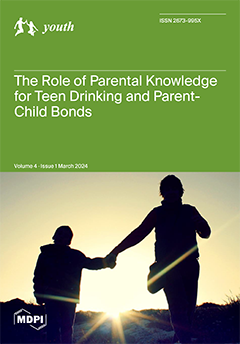This study examined how Social Cognitive Theory (SCT) constructs help explain the intention to quit e-cigarettes in young Australian adults aged 18–24 years to inform vaping cessation programs. A cross-sectional survey of young adult vapers (
n = 422) between March and the
[...] Read more.
This study examined how Social Cognitive Theory (SCT) constructs help explain the intention to quit e-cigarettes in young Australian adults aged 18–24 years to inform vaping cessation programs. A cross-sectional survey of young adult vapers (
n = 422) between March and the end of May 2023 examined personal, environmental, and behavioural factors of vaping cessation. Hierarchical multiple regression analysis examined the effects of SCT constructs on intention to quit vaping, controlling for covariates. Results found, in our sample consisting of 68% (
n = 360) females, 18% (
n = 95) males and 14% (
n = 77) others, almost two-thirds (59.7%) of participants reported a quit attempt in the last year; with quit attempts being associated with quit intention (
p ≤ 0.001). Model 1 (past year quit attempt, gender, educational attainment) accounted for 28.7% of the variance in quit intentions, with the addition of Model 2 SCT constructs adding a further significant 6.3% variance. Self-efficacy (B = 0.164,
p ≤ 0.001), benefits (B = −0.106,
p = 0.041) and social norms (B = −0.086,
p = 0.035) had significant independent associations with quit intention. Findings demonstrate the SCT theoretical framework is suitable for use when developing vaping cessation programs, identifying the SCT constructs as important factors for quit intention. The findings can be used to inform the development of evidence-based vaping cessation programs to encourage vapers to quit and/or better support them in the quitting process.
Full article




